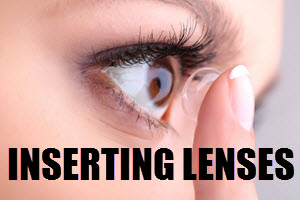Understanding the Appeal and Risks of Decorative Lenses
Decorative lenses, often referred to as cosmetic or costume lenses, are an intriguing accessory that has captured the imagination of many within the fashion and entertainment industries. These lenses provide a unique opportunity to transform one’s eye color dramatically, offering an intensified aesthetic appeal capable of complementing various looks, whether for daily wear or special occasions like Halloween or fashion photo shoots. However, while their cosmetic allure is undeniable, not all decorative lenses available on the market are safe. Many counterfeit products infiltrate the retail space, posing significant health risks to users due to substandard materials used and poor manufacturing practices which can lead to serious eye complications.
Importance of Purchasing from Reputable Sources
One of the most crucial steps in ensuring both the aesthetic quality and safety of decorative lenses lies in sourcing them from reputable outlets. Given the delicate nature of the eye and the significant impact lenses can have, it is recommended that anyone considering wearing decorative lenses seek the guidance of an optical professional.
Medical Advice and Prescription: Contrary to some perceptions that decorative lenses are purely cosmetic, they must be treated with the same regard as corrective lenses. This necessitates visiting an optometrist or ophthalmologist to ensure a suitable prescription is written, taking into account the precise shape and curvature of the eye. This professional consultation ensures that the lenses fit correctly, reducing risks such as irritation, infection, and in extreme cases, vision impairment.
By prioritizing prescriptions and professional medical advice, wearers can enjoy the aesthetic benefits of decorative lenses without compromising their ocular health.
Identifying Packaging and Authenticity
Due to a proliferation of counterfeit goods in the marketplace, consumers must be educated on identifying genuine products versus substandard imitations. The authenticity of decorative lenses is often first assessed through their packaging.
Check for Manufacturer Details: Authentic decorative lenses have detailed information readily available on their packaging. This includes the manufacturer’s name, contact details, production location, and batch numbers, all of which offer a trail back to the original producer and ensure accountability. Counterfeit products frequently omit such critical information or present details that are generic or inconsistent, serving as a red flag to potential buyers.
Examining Packaging Quality: A keen eye for the quality of packaging can also serve as an effective checkpoint. Authentic products are usually enclosed in robust, durable packaging that is equipped with secure, tamper-proof seals, signifying both the product’s quality and safety. Conversely, packaging that seems low-grade or easily damaged may indicate that the lenses are counterfeit.
Inspecting the Lens Quality
A deeper inspection at the individual lens level can further help in discerning quality.
Lens Material and Color Quality: High-quality decorative lenses are fashioned from medical-grade materials, ensuring not only comfort but also the preservation of eye health during wear. Examination of the lens for any signs of unnatural coloring or irregular pigment distribution can unveil poor manufacturing techniques commonly associated with counterfeit products. Such inconsistencies could lead to uneven wear and discomfort.
Clarity and Surface Inspection: It’s critical to conduct a visual inspection of the lenses for any inconsistencies or irregularities on their surface. The presence of bubbles, scratches, or any foreign deposits are indicators of inferior quality. These defects can significantly irritate the eye or even damage the delicate tissue of the cornea, underlining the necessity of avoiding such products.
Understanding the Regulatory Marks and Certifications
In various jurisdictions, the sale and distribution of decorative lenses are subject to regulatory oversight, aimed at protecting consumer health. As such, purchasing lenses that carry appropriate regulatory marks and certifications is paramount.
Real decorative lenses adhere to the health and safety regulations set forth by relevant authorities. Look for approval marks such as those from the Food and Drug Administration (FDA) in the United States, the Conformité Européene (CE) marking in European countries, or other regional certifying bodies pertinent to your location. Such certifications signify that the lenses have been tested for safety and efficacy. Information about these certifications is typically available on the lens packaging or directly from the manufacturer’s website, providing another layer of assurance to the consumer.
Conclusion
In conclusion, vigilance and informed purchasing decisions are key to enjoying the benefits of decorative lenses while maintaining eye safety. By familiarizing oneself with the indicators of genuine product quality—including packaging details, material characteristics, and regulatory compliance—consumers can effectively reduce the risk of exposure to counterfeit products. Furthermore, sourcing from certified and reputable suppliers, coupled with professional medical consultations, offers the foundation for a safe and satisfying decorative lens experience. The eye’s health should never be compromised, and taking these precautions ensures that the allure of decorative lenses is enjoyed without adverse consequences.



 Cosmetic contact lenses
Cosmetic contact lenses